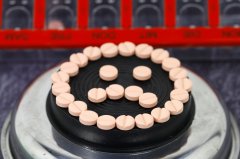Contamination in pharmaceuticals can quickly turn into a nightmare with yield loss, recalls, bad press, and harmed consumers. Thus, it’s critical to stop contamination from ever being an issue during production in your cleanroom.
Here at Lighthouse Worldwide Solutions – the world’s clean air experts – we’re pros at keeping cleanrooms extra clean. It’s our business and passion to prevent yield loss and set industry standards in cleanliness.
How Can You Prevent Contamination?
Preventing contamination starts at the source which requires an understanding of where contamination comes from.
In a cleanroom, contamination can come from anything entering the room. This includes the air (even when it’s filtered), humans, materials, equipment, cleaning equipment, and gowns.
Basically everything produces particles that can be shed and become potentially dangerous particles.
So what’s the biggest culprit of contaminating cleanrooms? Personnel.
Humans account for 75% to 80% of particles in cleanrooms. We’re constantly shedding skin, hair, and microorganisms. Every minute, we shed around 40,000 skin cells.
When stationary, we generate around 100,000 particles of 0.3 microns or larger through our skin, hair, clothing, and more.
When we’re moving, that number increases to over 5,000,000.
And that’s just humans – not going into the particles brought into the room from another source.
So how can we prevent contamination in cleanrooms?
Revisit Your Gowning Practices
Even a small strip of skin can shed hundreds of thousands of small particles, so proper gowning is crucial to lowering contamination levels. Make sure your gowning protocols promote true sanitation and are thorough. Over time, personnel may get lax on these protocols, so refresher courses designed to engage employees are important.
Use Appropriate Air Filters For Your Industry
Depending on your industry, you will need to use the appropriate filters and filtration systems to make sure the air is clean as possible. Most facilities use some combination of HEPA and ULPA filters.
A High Efficiency Particulate Air (HEPA) filter can theoretically filter out 99.97% of particles in the air with a Most Penetrating Particle Size (MPPS) of 0.3 microns.
An Ultra Low Penetration Air (ULPA) filter is more fine than a HEPA filter, with 99.9995% efficiency and a MPPS at 0.12 microns.
Cleaning Procedures For Entering Materials And Equipment
Materials and equipment that come into the cleanroom can carry contaminants and extra particles on them. So address your cleaning protocols for outside materials and equipment.
To prevent contamination in a cleanroom, any equipment – including cleaning equipment – that comes into the cleanroom should be built from non-porous and easily sanitizable materials. This will help them be easily cleaned when being brought into the cleanroom.
As for materials used in production, their sanitation and storage should be carefully monitored before they enter the cleanroom.
Identify Batch Numbers & Only Sell One Batch At A Time
When in production, everything should be done under one batch number and that batch should be the only one available when possible. This tracking will allow for quick and seamless recall or cancellation of orders if anything is found in one product. This will minimize yield loss if contamination is discovered.
Dedicate Or Dispose Of Accessories
Accessories that are used in a cleanroom should be dedicated to one type of task or disposed after use to prevent contamination. Accessories that are used in cleanrooms should also be stored in the cleanroom or positive pressure environment and sanitized regularly. Since gloves and gowns carry particles, they can still pass particles onto the equipment which can build up. Thus, storage practices, disposal, and cleaning are important procedures for accessories.
Revise Storage Habits
Where and how are you storing equipment and products in the cleanroom? What about equipment and products before they enter the cleanroom?
The cleanliness and opportunities for contamination matter in storage, as well as in production. So make sure to keep materials separated and, when necessary and possible, in positive pressure, cleanroom environments.
Cleanroom Cleaning Procedures
Cleanrooms and equipment should be constructed from non-porous and easily sanitized materials. This will prevent particles from building up on the construction materials. A cleanroom should be thoroughly cleaned and sanitized at least once a day or when production changes.
When was the last time you addressed your cleaning procedures and made sure everything in your cleanroom is easily sanitized? Do you check for thorough sanitization practices for items entering the cleanroom? It might be time to re-address these procedures.
Use Real-Time Monitoring Particle Counters
This method won’t prevent contamination from happening, but it will prevent contamination from continuing and limit yield loss. Essentially, when using a real-time particle counter in a cleanroom, an alarm will alert you when particle size or number exceeds set limits. Once you get this alarm, you’ll be able to immediately intervene and find the source of contamination.
This is the best method to prevent yield loss and keep your cleanroom in production in the safest way possible while streamlining your workflow.
What Tools Will Help You Prevent Contamination?
The reality is that no matter how meticulous we are, particles will exist in the cleanroom environment. So we should take every precaution to avoid them and every precaution to recognize them.
That’s why we offer powerful and accurate real-time particle counting solutions, such as the Apex Z. The Apex Z is an easy to clean particle counter designed for maximum workflow streamlining.
It has the largest battery life and shortest recharge time on the market, while being very quiet, small, and light. It’s efficient with simple connectivity so that you don’t have to spend hours making sure you’re counting your particles correctly.
With programmable SOPs, an SOP driven workflow, and traceable GMPs, the Apex Z’s paperless data management is a tool designed for today’s cleanrooms. If you want to streamline the workflow in your cleanrooms and reduce your yield loss, you’ll want to learn more about the Apex Z by contacting us today.


